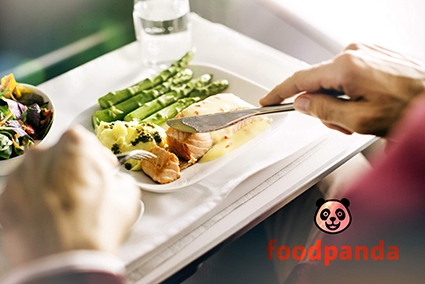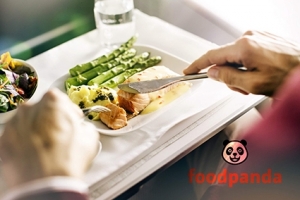Foodpanda Facts: the Strange Case of Airplane Food
Although smell is a dominant sense in flavor appreciation, taste is without a doubt a synesthetic (amalgamated) experience. It begins with the smell, as it naturally reaches us first. Then comes sight, the way food is presented; besides, it’s not a coincidence chefs are considered artists. Last come the taste and the texture. But all this time we were missing out on a sense, thinking it doesn’t affect the way food tastes: Hearing. If we think about it, there are many occasions we hear someone complain about the loud noises in restaurants, or just bad music. How do you eat when at home? What kind of music do you -subconsciously- choose?
Still, the loudest example for advocating this theory is airplanes. Food delivery app foodpanda (www.foodpanda.ge) is curious to find out more about this mystery.
Everyone whines about how much they hate airplane food, but everyone secretly anticipates the moment the cart will arrive at your row and ultimately, everyone actually ends up eating it (or at least parts of it).
So what’s really putting us off when it comes to airplane food? The smell when they heat it up that by the way, is identical regardless of the food or airline? The warm, perfectly round bread that once it cools off you can use it as a tennis ball? The plastic containers that remind us of the 1960’s ‘TV dinners’? The unidentifiable meat served in a science-fiction-looking-sauce? Well, surely all these play a role; but these are just the obvious reasons. Because it’s not really that airplane food doesn’t taste good; it actually tastes different. As a matter of fact, when your taste buds are way above the clouds, your normal sense of taste has -in contrast- stayed on the ground. Taste buds and sense of smell are the first things to go at 30,000 feet as our perception of saltiness and sweetness drop when inside a pressurized cabin, mainly due to lack of humidity, lower air pressure, and last but not least, the background noise.
Many taste experiments have been made and the most surprising finding is that the 85db cabin noise does not affect all 5 tastes equally: Bitter, salty, sour, sweet, and umami react differently when flying. The most striking results were that saltiness and sweetness reduced while umami increased under cabin noise conditions. The experiments suggest that using ingredients or foods with a lot of umami –soy or fish sauce, cheeses, seared or cured meats, tomatoes– can make meals taste better in an airline cabin.
Haven’t you noticed how many people order tomato juice (or Bloody Mary) in an airplane? That’s because tomatoes are very rich in umami. Tomato juice, having a strong umami taste, could be more appealing at 30,000 feet because your ears tell you so. Yes, it all comes down to loud noise.
So better go for the umami option: go for anything with tomatoes, beef, pork, chicken, mushrooms, carrots, and parmesan. Or perhaps there’s another way to address the bad airplane food problem: earplugs.











